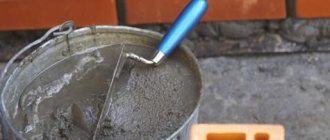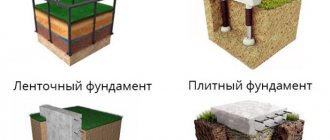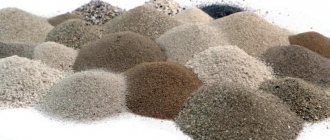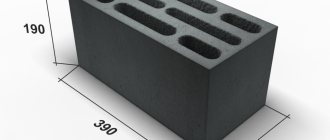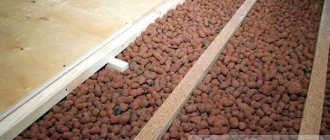When carrying out various construction and repair work, very often there is a need to mix several components to obtain a homogeneous composition of the mixture, be it various varnishes, paints, putties or sand-cement mortars. It is quite difficult to prepare a high-quality mixture by hand. To carry out such work, a construction mixer will be an indispensable assistant - a special device that will significantly reduce labor costs, save time and obtain a high-quality mixture.
Construction mixer design
Structurally, all mixers are similar. This electrical device has a housing with a drive, in the form of a motor, gearbox, and also a mechanism for attaching the nozzle. A nozzle is inserted into the body - a steel rod, at the end of which there is a whisk. When turned on, the engine transmits torque, thanks to which the nozzle mixes dissimilar components until a homogeneous mixture is obtained.
If we talk about control keys, then this tool has an on/off button, as well as a shaft rotation speed controller. As a rule, it can operate in two modes - at low and high speeds. By the way, some simple mixers are produced without a gearbox. In this case, the spindle rotation speed directly depends on the force of pressing the button. The harder you press on the key, the higher the voltage and the more revolutions the instrument produces.
Kinds
The modern market offers a large number of models designed for mixing different volumes of solutions. The equipment is classified to facilitate the selection of a concrete preparation apparatus. Mixers are:
- Manual - they have a specially designed nozzle for them. This device is mechanical; a hand-held construction mixer for preparing mortar works thanks to human power;
- Electric ones are a hammer drill, a drill, or a specially designed device. The kit includes various attachments.
Mixing with hand tools allows you to make up to 1-5 kg of solution. This tool is also good. The best in terms of functionality is an electric device; it has greater productivity and greatly facilitates the work.
Single screw construction mixer
The devices are divided into single-screw and twin-screw. Twin screws have greater productivity and power. Additionally, rotating the attachments in different directions ensures that the device is held in one position.
The main indicator of the device is how much solution it allows to mix in one operation. In turn, this depends on how powerful the mixer is.
Classification of mixers
In a general sense, this power tool can be divided into 2 types:
Hand mixer
From the name you can understand that when operating a hand mixer, the worker is forced to hold it in his hands throughout the entire mixing. As a rule, these are lightweight tools with low power. And their cost is more reasonable, and therefore for a person who is busy with renovations in his own home or country house, the choice of a hand mixer is the most optimal.
Speaking about the advantages of a hand mixer, one cannot fail to note the ease of its transfer from site to site, which means the ability to perform field work without the use of equipment. In addition, by controlling a hand mixer, a worker can set any angle of inclination of the nozzle, as well as set the required mixing depth. And such a power tool can be immersed in any container, regardless of its size.
Add to this the fact that a hand mixer consumes minimal energy and produces minimal noise. And storing it takes up little space. In general, if this device is used occasionally, and is not being used at an industrial pace, a hand mixer is the most suitable option.
Stationary mixer
An alternative to a hand mixer can be a stationary electric appliance. Externally, it is a wheeled frame with a container into which a mixer fixed with a bracket is immersed. The features of this installation include the ability to maintain the mixture in a liquid state for a long time. This is convenient if the material is consumed slowly, for example, when working with decorative plaster. If you have to periodically beat the hardening mixture, this leads to heterogeneity of the material, which does not have the best effect on the result. A stand mixer solves this problem with ease.
The presence of a kneading container eliminates the need to look for special dishes with a suitable shape, which can also be considered an advantage of this design. However, such an electrical appliance costs many times more than a hand mixer, and therefore it is purchased, as a rule, by those who are professionally engaged in construction work and constantly need ready-made high-quality mixtures. Finally, such a heavy and large tool can only be moved to another object using transport.
Mixer with asynchronous motor
Today, a separate category of electrical appliances in question has appeared on the construction market - mixers with an asynchronous motor. Their main difference is that the motor is controlled not by changing the voltage, but by regulating the frequency of the current.
This mixer does not have a gearbox, but is equipped with a current frequency converter. This is quite enough to maintain the required torque and work for several hours without overheating. The advantages include the noiselessness of this model, because most of the mechanics are replaced by electronics.
The truth and disadvantages of such a tool are quite obvious. The presence of electronics makes it expensive. And considering that the mixer operates in conditions of constant dust and dirt, if the frequency converter fails, its repair is comparable to buying a new mixer.
Hand Duplex Mixer
In addition to the above-mentioned models, manufacturers of construction equipment can also offer specific tools, for example, a manual two-spindle mixer. This is a typical hand-held power tool, in which two attachments are installed at once, rotating in opposite directions.
The advantages of this design include the presence of two gears in the gearbox. In first gear, the attachments rotate at low speed but with high torque. This mode is suitable for viscous materials and thick mixtures. In second gear, the tool speed is much higher and the torque is low. This mode is optimal for liquid and light mixtures.
In addition, with a mixer with two attachments you can mix a much larger volume of the mixture and achieve a more uniform consistency. However, electricity consumption when working with such a device increases by 1.5-2 times.
Drill mixers
This model combines two functions. On the one hand, this is a full-fledged mixer. However, thanks to the presence of a jaw chuck, the whisk attachment can easily be replaced with a drill bit for drilling large holes.
Important! Considering that the mixer is a low-speed power tool, it cannot work with small-diameter drills, which means it cannot fully replace a conventional drill.
Calculation of concrete composition
Advantages and disadvantages
The disadvantages of drum concrete mixers include:
- Large dimensions and weight, inconvenient transportation;
- It is inconvenient to clean the drum from adhering solution, and the need to drain a large amount of dirty water somewhere. This is another reason why they try not to use them indoors;
- The need to comply with container loading standards. The instructions do not allow mixing either too much or too little of the mixture, as this affects the quality of the solution.
The advantages were described above: the speed of preparation of a fairly large amount of mixture with a large filler.
This could be important! The absence of energy supply costs can also be considered a bonus. And if electricity is not supplied to the construction site, then a manual concrete mixer becomes the only possible way to increase the efficiency of work and reduce labor costs.
Construction mixers do not have all of these disadvantages. They are compact, the nozzle can be easily washed in a small amount of water, and you can use them to mix a small amount of solution if you just don’t have enough.
But it is impossible to mix concrete with large fractions and in large quantities. Only a very powerful professional tool can handle this kind of work. But it is too expensive for periodic or one-time use.
Functions performed by the mixer
Using this construction device, the following compositions are mixed:
- concrete and cement mortars consisting of sand, crushed stone and binding components;
- gypsum plasters;
- bitumen mastics;
- compositions of varnishes and paints;
- acrylic primers;
- adhesive bases for glass mosaics, ceramic or tiles.
Types of mixers depending on power
If we talk about the key characteristics of this tool, then, first of all, it is worth studying the power indicator. Based on power, this device can be divided into three groups:
— Mixers with power from 600 to 900 W. They are used to work with a small volume of working mixture and low viscosity of the material. For example, such low-power devices do a good job of preparing primer mixtures and mixing paint. Mixers in this category have only one speed, providing a nozzle rotation speed of 550-580 rpm. This tool weighs 2-3 kg, which allows you to work with it for a long time without getting tired at all.
— Mixers with power from 1000 to 1500 W. These devices already have a speed controller. Thanks to this feature, at the second speed with high speeds, you can perfectly knead light liquid mixtures. And if you need to prepare a heavy cement mortar, just switch the mixer to first speed, reducing the speed. By the way, double-spindle mixers are also produced in this range. A semi-professional instrument weighs approximately 7-10 kg.
— Mixers with power above 1800 W. This is a professional power tool that is used to mix significant volumes of mixtures (from 20 to 200 liters per batch), regardless of their viscosity. As a rule, in such models the speed controller switches to 2-3 positions. Naturally, such a mixer is the most reliable and durable. However, its price is 7-10 times higher than low-power analogues, and therefore it is obvious that such tools should only be purchased by those who are professional repairers and plan to use this equipment daily. Their weight varies between 10-15 kg.
Important! Keep in mind that the higher the power of a power tool, the heavier it is.
Circulating mixing of liquids
Mixing liquid-phase systems with a stream of liquid flowing from the nozzle
When flowing from the nozzle, the liquid stream takes the shape of a cone, expanding as it moves away from the nozzle mouth. This is due to the following reasons:
- The flow flowing out of the nozzle displaces the volume of liquid located in front of the nozzle.
- The stream of flowing liquid sets in motion (parallel to the stream) nearby layers, due to the transfer of part of its energy to the environment. The transfer of momentum is determined by the tangential stress between the moving and stationary layers of liquid, as well as the turbulent penetration of liquid particles from the jet into the environment. In this case, the product of the mass and speed of the moving fluid remains constant (without taking into account losses from internal friction).
Each layer that begins to move, surrounding the stream of liquid, sets the neighboring layers in motion along its path. Therefore, as it moves away from the nozzle, the liquid jet has an increasingly larger cross-section and lower speed. In any section normal to the direction of the jet, its speed decreases as it moves away from the axis.
- After nearby layers of liquid are captured by the jet and set in motion, a vacuum is created in the space they previously occupied. This leads to the suction of adjacent (stationary) layers of liquid, which are thereby also set in motion. This cycle repeats continuously.
Mixing liquids with gas
When circulating pneumatic mixing of liquids (Figure 9), a central guide pipe is installed in the apparatus, which limits the suction of liquid from the surrounding volume. Gas enters the liquid in the form of bubbles.
Figure 9 — Scheme of circulating pneumatic mixing
As the bubbles rise, the surrounding liquid is set in motion toward the liquid surface under the action of tangential stress. Behind the rising bubbles, a vacuum is formed, causing the suction of liquid from the surrounding space. The bubble is subject to hydrostatic pressure from the liquid column above it. As the bubble moves, the magnitude of this pressure continuously decreases and the diameter of the bubble increases accordingly. At the same time, the intensity of mixing also increases, because as the bubbles expand, energy is gradually released, which causes the liquid to flow. This is the fundamental difference between pneumatic mixing and mixing with a submerged nozzle. After the gas reaches the surface, the liquid carried by the gas flows to the walls of the apparatus and sinks to the bottom, where it is again sucked into the guide pipe.
Impeller mixer
An impeller mixer is used to ensure good gas-liquid contact while simultaneously vigorously mixing (Figure 10). The stirrer shaft is placed inside pipe 1, through which air is supplied under slight excess pressure (in some designs, air is sucked in when the stirrer rotates). The mixer has a row of blades, and at the end of the pipe there is a stator with blades 2. The presence of two rows of blades, movable 2 and fixed 3, ensures good mixing of liquid and gas.
1 - central pipe; 2 — stator blades; 3—mixer (rotor) blades. Figure 10 — Impeller mixer
Pulsation mixing
It consists of mixing the treated medium with pulsating jets.
By design, pulsating devices are simple and convenient. The reciprocating and forward movement of liquids in them is carried out using a pulsator (usually a valveless piston pump), which is connected in one of two ways:
- To the bottom of the apparatus (Figure 11, a);
- To the light liquid supply line (Figure 11, b).
Figure 11 - Pulsation devices
To protect the pulsator mechanism from the effects of the processed liquids, a membrane, bellows or pneumatic device is used, in which there is a buffer layer of air between the pulsator and the medium. The expansion or compression of this layer of air causes vibrations of the liquid in the apparatus.
Consequently, the intensification of the processes carried out in pulsation devices is achieved by superimposing low-frequency oscillations on the reagents with the possible addition of the oscillatory motion of the liquid with a jet one.
There are no moving parts in the working area of the pulsation apparatus, and the energy source - the pulsator - is removed from the apparatus. Converters of the oscillatory motion of a liquid into its other types are stationary and are an integral part of the apparatus.
Nozzle mounting options
Construction mixers may also differ in the attachment system for attachments. They are produced in the following types:
— Classic jaw chuck. The nozzle is fixed in it using a special clamping key included in the equipment set.
— Quick-release jaw chuck of the QuickFix system. This mechanism is similar to the mechanism of a screwdriver, which means that the attachment is fixed in it without a special tool.
- Threaded connection. As a rule, the fastening mechanism has an M12 or M14 thread (less often M21), into which the nozzle is screwed, secured, for reliability, with a wrench.
— Chuck with HEX fastening system. The fastener has a hex shank of size 8, 10 or 12, in which a groove is made for quick fixation of the nozzle.
— SDS-plus cartridges. This quick tool change design is borrowed from household hammer drills.
Types of shanks for mixing attachments
Now let’s look at the shanks that the mixer attachments have. They may look like this:
- Regular hexagon 8, 9 or 10. These shanks are designed to be mounted in a jaw chuck using a key.
- 8, 9 or 10 hex with groove . This shank is suitable for spring mounting in chucks with the HEX system.
- Cylindrical shank with grooves for installation in SDS-plus chuck.
- Thread M12, M14, and also M21x1.5. Highly specialized mixers are equipped with threaded attachments on the shank.
Dimensions of nozzle and whisk
1) There are two standard nozzle length sizes - 400 and 600 mm. In addition, nozzle extensions are available for sale, increasing the total length from 200 mm to 1 meter.
2) The diameter of the rim can vary from 80 to 220 mm.
Corolla shapes of construction attachments
Depending on the mixture you are working with, it is wise to choose the appropriate whisk shape. They are as follows:
1. Spiral. Whisks with spirals are the most popular. The spiral turn can be twisted to the left or right. Right-hand ones are used to produce thick cement or concrete mixtures, since during operation they lift heavy mortar from the bottom. Whisks with a left turn, on the contrary, capture the components of the mixture from above and lower them down. They are used for mixing fluid materials, such as liquid putties and paint and varnish mixtures. By simply lowering the mixture ingredients down, this whisk prevents them from splashing.
Important! Some mixers boast a reverse system. If you have just such a tool, it does not matter at all in which direction the turn of the whisk is directed. All you have to do is purchase any of the attachments and use it with the correct direction of rotation for maximum efficiency of the process.
2. Corollas with straight blades. This design has vertical blades made of a round rod. Such whisks mix the compositions only horizontally, without raising or lowering them. In this case, air does not enter the mixture, which is an advantage when working with adhesives, gypsum and compositions for self-leveling floors.
3. Helical. Nozzles with screw-shaped whisks are used for mixing liquid components. Therefore, the screws themselves are often made of plastic (less often of steel). On some models, two screws are installed at once: one to lift components from the bottom, the other to prevent splashing.
Important! When choosing a suitable nozzle, study its technical description. It indicates for what work this model is used. Moreover, the document indicates the maximum volume of solution for which the mixer is designed.
By the way, on store shelves you can find attachments for mixers with support rings or disks. Such useful devices allow you to rest the mixer on the bottom of the bowl and mix the desired compositions without holding it suspended.
Important! When working with paint and varnish products, it is wise to choose stainless steel nozzles. Otherwise, the metal may oxidize and distort the color of the paints themselves. It is also better to mix solutions based on mineral components with a stainless nozzle. Coated metals are not suitable for these purposes, because minerals will wear off the surface layer during friction.
Selecting the right product
Mixers for rotary hammers have two main parts: a shank and a working whisk. The size of the tip varies depending on the type of substances being mixed and the target volume of work. Manufacturers always describe in the accompanying materials what mixtures can be mixed. As when choosing other products, it is useful to give preference to products from well-known companies. Even the multiple difference in comparison with unknown brands is fully justified by the high quality of the products.
Much attention should be paid to the selection of beaters according to the shank format. Traditionally they have a cylindrical or hexagonal configuration
Also in some cases, M14 and SDL-Plus connectors are used. The choice is determined by which connector is provided by the hammer drill manufacturers. Bosch Corporation, for example, equips its products with SDL-Plus connectors.
Most often, you can simply tell the sellers what device the mixer is being purchased for. They will be able to offer the optimal nozzle. The basket of a regular whisk is from 10 to 11 cm with a diameter of 8-15 cm. If the hammer drill is very powerful or you will have to mix a lot of solutions, it is better to choose a larger basket. As for the length of the mixer, the choice is not difficult - you need to focus on the height of the container where the solution will be mixed.
Additional functions of mixers
Some models of the tools in question have additional useful features designed to make work easier and make it as safe as possible. These functions include:
1. Electronic engine protection . This function prevents the electric motor from burning out by turning it off in the following cases:
- critical engine load;
- overheating of the power tool;
- critical wear of brushes.
2. Vibration protection . To protect the worker’s hands from vibration, construction mixers are equipped with a comfortable handle, which is equipped with anti-vibration material. Non-professional devices have handles in the form of two brackets. Heavy professional devices are available with a T-shaped handle, which is more convenient for working with heavy mixtures.
3. Soft start . This function allows you to start the engine smoothly, without jerking, thereby avoiding splashing of dry mixture or liquid solutions.
4. Rotation speed lock . Some models have an additional button that activates the locking mechanism. By pressing it, you can fix the selected rotation speed and relax your finger pressing the start button.
Terms of use
The mixer must be used exclusively for its intended purpose; if this requirement is not observed, it may quickly break down. The rules of use can be found in the corresponding instructions supplied with the tool.
Before you start using the tool, even if you have experience using such a device, you must read the instructions for its use and strictly follow the recommendations given in it.
A number of recommendations for use:
- do not work with a tool that has any malfunctions;
- Before starting work, you must check the serviceability of all parts of the device, make sure that there is oil in the gearbox;
- do not keep the device load at its peak values for a long time;
- after carrying out work or a long break in the operation of the product, you should rinse the nozzle with water and remove particles of the solution from it; do the same with the device;
- The device should be stored in a dry and well-ventilated place.
Mixer with and without gear: which one to choose?
In cases where you have to work a lot with low-viscosity mixtures, it is better to choose a mixer without a gearbox. Such solutions do not require high power, but a high number of revolutions is required. With this technique, you will mix the liquid solution faster and better, while using a minimum of electricity.
Mixtures of medium and strong viscosity are another matter. For them, a mixer with a gearbox is preferable. The first speed is optimal for viscous mixtures such as sand-cement mortars. In this case, the supply voltage is stable, because the main part of it is spent on maintaining torque, and not on shaft speed. As a result, the engine does not overheat and is cooled in a timely manner, which means that the mixer lasts as long as possible.
Special mixers
Anchor or frame mixers with blades curved to the shape of the walls and bottom of the vessel are considered one of the types of blade mixers and are used for mixing viscous liquids and pasty materials (Figure 4). Anchor and frame mixers, the shape of which is close to the internal shape and diameter of the container or apparatus, clean the walls of the apparatus from material adhering to them, thereby improving heat transfer and preventing local overheating of the mixed substances. They are durable and suitable for mixing viscous liquids, as well as for mixing low-viscosity liquids in containers heated using heating jackets or coils, when precipitation may occur or the mixing product may adhere to the heated walls of the container or apparatus. In these cases, an anchor or frame stirrer is used so that the edges and underside of the stirrer clean the walls and bottom of the apparatus from settled mixing products. Typically, these mixers are driven by a geared motor at a low speed, such as 15–40 rpm.
Figure 4. Anchor (left) and frame agitators
A sheet mixer consists of an approximately square blade mounted on a vertical shaft (Figure 5). These mixers are especially suitable for processes that require uniform distribution of the substance throughout the volume, such as dissolution, dilution or chemical reactions. Sheet mixers are sometimes classified as turbine mixers without a stator based on the type of flow they produce. In addition to the purely tangential flow, which is predominant, vortex flows are created by the upper and lower edges of the mixer, similar to the flows formed when mixing with a paddle mixer.
Figure 5. Sheet agitator
At a high number of revolutions, the tangential flow becomes radial. There are very simple designs of sheet mixers used in various industries. They are especially widely used to accelerate chemical reactions, dissolution and processes occurring during heat exchange. Creating jets in a liquid to promote dissolution can be achieved by drilling holes in the stirrer blade.
Sheet mixers are very durable and suitable for heavy-duty mixing, but are not suitable for mixing slurries and viscous mixtures.
The drum mixer is a paddle drum in the form of a so-called squirrel wheel (Fig. 6). Mixers of this design create a large lifting force and are therefore very effective in carrying out reactions between gas and liquid, as well as in obtaining emulsions, processing rapidly separating suspensions and stirring up heavy sediments. Recommended conditions for using drum mixers: ratio of drum diameter to vessel diameter from 1:4 to 1:6, ratio of liquid height to drum diameter of at least 10.
Figure 6. Drum mixer
Pendulum mixers. Mechanical stirrers are usually rigidly mounted on the lid or on the edge of the container. However, if it is necessary for the flow of liquid caused by the stirrer to reach places behind some partition, or if it is necessary to protect the stirrer from damage when striking pieces of loaded material, it is secured to an elastic pad, which allows some freedom of movement of the stirrer in the container. To do this, the support of a conventional propeller mixer with an electric motor is mounted on a rubber lining, securing it to the lid of the container. Thus, the stirrer is able to move in the vessel within the elasticity of this lining, and, in addition to rotational motion, also performs oscillatory motion. Sometimes, instead of a rubber lining, springs are used, onto which a support with a transmission, an electric motor and a stirrer are attached. In both cases, the elasticity of the lining must be calculated so that the stirrer cannot hit the walls of the vessel. .
How to assemble a homemade mixer
If necessary, making a mixer yourself is not difficult. To do this, you need to have a drill or hammer drill on hand and purchase an attachment that fits its chuck. Hex shanks as well as HEX shanks are suitable for a jaw chuck drill. If you have a hammer drill, purchase an attachment for it with a mount for the SDS-plus cartridge.
Important! Here it should be understood that both drills and hammer drills are designed for longitudinal load, and therefore a homemade mixer can be used exclusively for mixing light (preferably liquid) solutions in small volumes. If you neglect this advice, radial loads can lead to overheating of the electric motor and its failure. Such a mixer is not suitable for sand-cement mortars, but for mixing thin putty or paints it is just right.
Review of the best construction mixers
— Interskol KM-60/100E . Quite powerful and the most convenient mixer of the domestic models presented. It boasts electronic speed control and reverse, and in terms of safety, it has a power button lock. The price of this mixer is quite reasonable. True, the review speaks of a weak body and inconvenient fixation of the nozzle.
- Hitachi UM16VST. A mixer from a reputable company demonstrates the durability of the tool. The Japanese model is professional, stands out for its power and reliability even against the background of no less famous competitors. This mixer has a smooth start and double speed control. However, the location of this button is not the most convenient.
— Makita UT1401. A powerful mixer with all the necessary functions for high-quality and safe operation (including electronic speed control). In terms of price/quality ratio, it is the most popular of foreign models. The only thing that raises doubts among buyers is that the handle is not the most comfortable.
— DeWALT D21510. Those who need a compact, but at the same time good-quality model should look at the miniature mixer from DeWALT. This tool does not boast high power (710 W), and has only one speed. But at the same time, it is compact, lightweight (3 kg) and incredibly comfortable, which is noted by all reviewers without exception.
— Bosch GRW 18-2 E. The German quality of this model speaks for itself. It is more powerful than comparable competitors (1.8 kW), has electronic speed control and is very comfortable thanks to the ergonomic double handle. The only serious disadvantage of this device is the high price.
— Metabo RWEV 1600-2 . An amazing combination of power (1.6 kW) and lightness (4.5 kg) makes this model the most popular among buyers. In addition, this tool can be used as a drill. And also, the manufacturer gives it a 3-year warranty.
— Elitech MC 1600/2ED . If you need a tool for complex work involving manual mixing of large quantities of concrete, consider purchasing this mixer. It is two-handed, has good power and the ability to run at low speeds for a long time without overheating. The only thing that users pay attention to is the high noise during operation.
Buying a construction mixer is an important and responsible step that will allow you to carry out construction and repair work as efficiently as possible and in the shortest possible time, and also not overpay for expensive equipment.
Concrete mixer: types, characteristics, differences, photos
Circular saw: types, characteristics, recommendations
Stirring using a magnetic field
The essence of this method is as follows. A vessel with non-magnetic and electrically non-conducting walls is placed in an alternating magnetic field generator. As a generator, you can take the stator of any asynchronous machine, in which a rotating magnetic field is induced. The vessel is filled with substances that need to be mixed and ferromagnetic particles.
Under the influence of an external magnetic field, force and torque are applied to the ferromagnetic particles. In addition, eddy currents are induced in ferromagnetic particles, which form their own magnetic field, which also interacts with the external magnetic field. As a result of these interactions, the particles begin to move quickly and simultaneously rotate around their axis. Colliding with each other, they move along complex trajectories, forming local “vortices”.
As a result of this movement, the environment in which the ferromagnetic particles are located is thoroughly mixed for a short period of time.
Advantages of mixers in which mixing is carried out by a magnetic field:
- Speed of the process.
- Greater homogeneity of the mixture.
- Simplicity of design.
- 4. Possibility of absolute sealing of the volume in which mixing is carried out.
- Small dimensions.
- High efficiency
- The ability to carry out a continuous mixing process.
